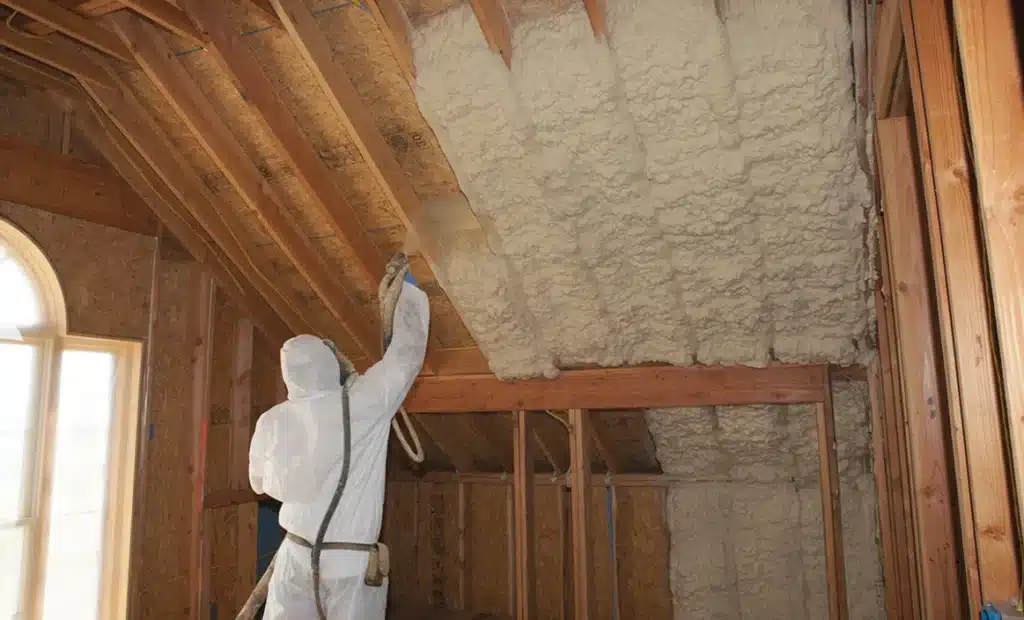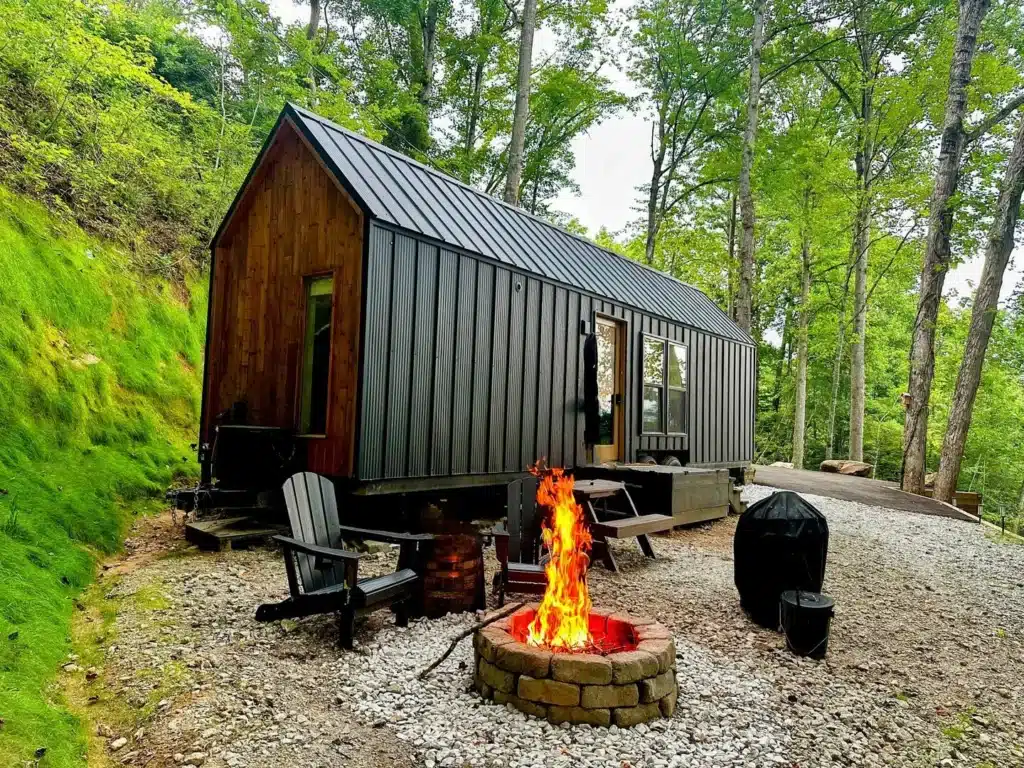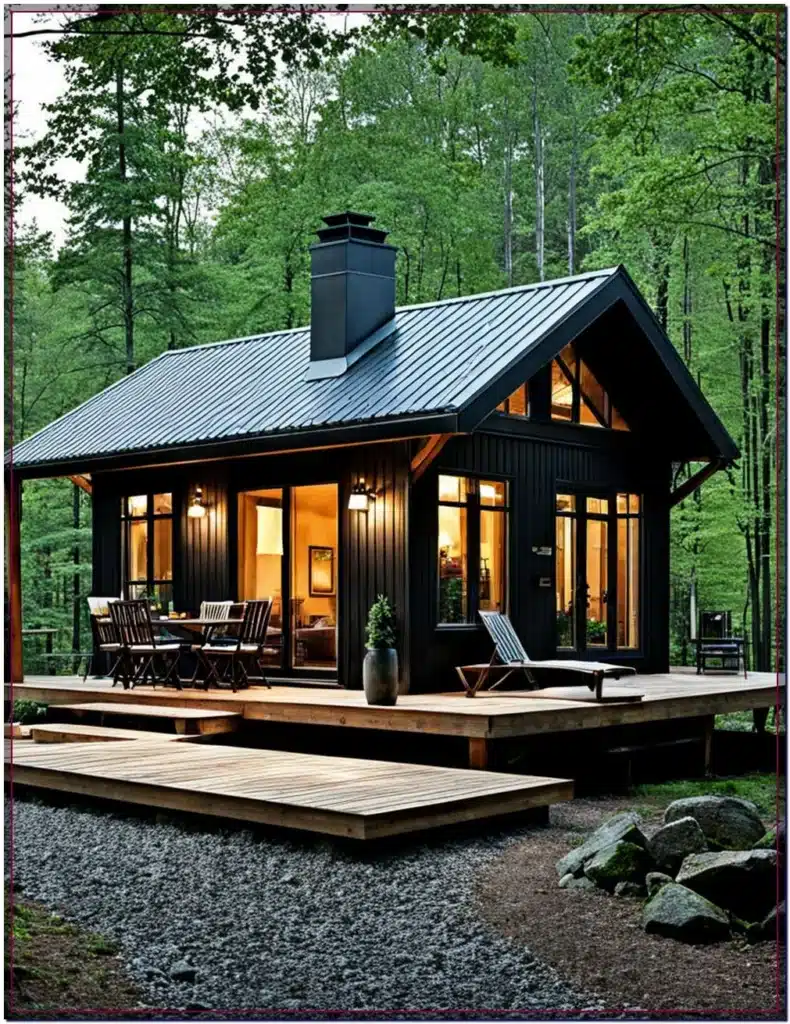So let’s make a case for both perspectives with our current list about minimalist living and some facts backing small house arrangements. Let us now take a look into why one could choose to go small or have reservations about it.

50 Reasons to Consider a Small House
Financial Independence
- Lower Cost of Initial Investment: The construction or purchase prices of tiny houses fall short of those of standard residential houses.
- Lower Monthly Costs: A diminutive area results in less cash outflow related to all utility bills, property rates and maintenance.
- No Home Loan: Most tiny house proprietors buy them outright thus they are free from any mortgage burdens..
- Increased Savings: You’ll save more money for retirement or travel because your living costs are lower.
- Simpler Financing: It’s easier to get a small loan if you have decent credit.
Eco-Friendly Living
- Reduced Carbon Footprint: Tiny homes need fewer resources and energy.
- Sustainability: They often use eco-friendly materials and are built for using renewable energy.
- Less Waste: A smaller home encourages you to live with less stuff.
- Water Efficiency: These homes usually have water-saving fixtures.
- Green Certification: It’s easier to get LEED or other green building certifications.
Lifestyle and Mobility
- Simplicity: Living small means less clutter and more organization.
- Mobility: Many tiny homes have wheels, so you can move your home around.
- Closer to Nature: Smaller homes fit better with outdoor surroundings.
- Community: Tiny house villages help create a community feel.
- Flexibility: You can set up a tiny home in places where bigger homes can’t go.
Personal Fulfillment
- Customization: It’s cheaper and easier to design your home the way you like.
- Self-Sufficiency: It supports a DIY lifestyle, from building to living.
- Creative Living Solutions: You’ll find innovative storage and furniture ideas.
- Focus on Experiences: You have more time and resources for hobbies and travel.
- Unique Living Space: Tiny homes offer a unique and personalized space.
Practical Advantages
- Easier Maintenance: Less space means less time and money spent on upkeep.
- Lower Insurance Costs: Insurance is usually cheaper for smaller homes.
- Quick to Clean: You spend less time cleaning because there’s less space.
- Heating and Cooling Efficiency: It’s cheaper and easier to manage the temperature.
- Amendability: Your dwelling has the capability of embracing changes and expansion for your needs.
Cultural and Social Ramification
- Audacious Consumerism: Here, activities take precedence over belongings.
- Evolving Minimalism: This advocates for a simple life characterized by organization.
- Innovative Aesthetics: Small houses inspire architecture and design geniuses.
- Learning: They offer an avenue for educating people on how to live sustainably.
- Influence: Tiny homes challenge traditional views on housing.
Economic and Social Benefits
- Community Support: There’s a strong network of tiny house owners.
- Reduced Life Stress: Less financial burden leads to lower stress.
- Privacy: You get more privacy than in apartments or condos.
- Potential for Rental Income: You can rent out your tiny home.
- Increased Leisure Time: You spend less time and money on home maintenance.
Health and Well-being
- Natural Light: These homes are designed to maximize light, boosting mood and health.
- Outdoor Living: You should spend more time outdoors.
- Healthier Living Environment: It is easier to keep your house clean.
- Less Isolation: It is this social aspect that helps cure loneliness.
- Physical Activity: You will probably be more active when you’re outside.
Innovation and Learning
- Learning New Skills: You will hone many skills from building and repairing a small house.
- Technological Integration: Smart technology is easier to fit into smaller spaces.
- Creative Problem Solving: There are new solutions for daily living.
- Experimentation: Tiny homes provide a good platform for testing out different design concepts.
- Resourcefulness: You learn how to work smarter, not harder when living like this.
Personal Growth and Development
- Adaptability: You learn how to be adaptable and flexible at the same time.
- Mindfulness: It promotes an mindful lifestyle choice.
- Goal Achievement: It gives you the chance to follow your aspirations both personally and professionally.
- Community Engagement: Countless ways exist for engaging in tiny house projects..
- Legacy: You contribute to a sustainable future.

50 Reasons to Reconsider Choosing a Tiny House

Legal and Zoning Challenges
- Zoning Laws: Many places have strict rules that don’t allow tiny homes.
- Building Codes: It can be tough to meet local building requirements.
- Financing Difficulties: Banks might be hesitant to give out loans for tiny homes.
- Insurance Hurdles: It can be hard to find an insurer for a tiny house.
- Resale Value: Tiny homes might not go up in value like traditional homes do.
Practical and Lifestyle Limitations
- Space Limitations: There’s not much room for your stuff, guests, or activities.
- Privacy Issues: Being so close together can make privacy hard to come by.
- Storage Challenges: You have to keep decluttering to manage the small space.
- Entertaining Difficulties: It’s hard to host parties or have guests stay over.
- Limited Accessibility: Not all tiny homes are easy for everyone to get around in.
Personal and Social Considerations
- Family Growth: Tiny homes might not work if your family gets bigger.
- Social Perception: Some people might see tiny living as odd, which can affect your social life.
- Lifestyle Fit: The minimalist lifestyle isn’t for everyone.
- Work From Home Challenges: It can be tough to find enough space to work effectively.
- Limited Amenities: You might not have as many comforts as in bigger homes.
Environmental and Location Issues
- Site Restrictions: It’s hard to find legal places to park or build.
- Utility Challenges: Hooking up to water, power, and sewage can be complicated.
- Weather Vulnerability: Tiny homes might not hold up well in bad weather.
- Environmental Impact Concerns: There are issues with the materials used and the land needed.
- Mobility Limitations: Not all tiny homes can be easily moved.
Financial and Investment Concerns
- Long-term Viability: Living tiny might not be comfortable or practical forever.
- Investment Risk: The market for tiny homes is uncertain.
- Hidden Expenses: The property and the resources could cost an arm and a leg.
- Economic Stability: Small houses may not rise in price like other houses do.
- Insurance and Liability: There is a possibility that your premiums are higher or there will be lawsuits against you.
Designing and Constructing Dilemmas
- Personalized Design Expenses: When it comes to unique designs, the price can shoot up.
- Construction Skillset: Hiring professionals might cost you more cash.
- Material Expenses: Lightweight and durable materials are generally expensive.
- DIY Dilemmas: If you don’t have any experience it may be difficult to build one by yourself.
- Regulatory Navigation Languor
Quality of Life Considerations
- Comfort Compromises: There are possibilities for giving up some comforts.
- Low Volume: Sound may differ in these lesser places.
- Climatic Movements: Custody of the perfect degree of warmth could be troublesome.
- Outdoor: Perhaps, a secluded yard is what you long for.
- Restricted Kitchen Amenities: You have little room to prepare your meal with small kitchens.
Personal Preferences and Compatibility
- Lifestyle Restrictions: Needing to stay tidy and organized all the time can be stressful.
- Pet Considerations: It might not be the best environment for pets.
- Cultural Fit: It might not match your personal or cultural preferences.
- Hobbies and Activities: If you need space for your hobbies, you might feel cramped.
- Personal Growth: Limited space can hold back personal projects.
Social and Community Factors
- Isolation: You might feel cut off, especially if you’re far from others.
- Community Fit: Not every community gets the tiny house lifestyle.
- Accessibility: It can be hard for visitors with mobility issues to get around.
- Neighbor Relations: Being so close can lead to issues with neighbors.
- Civic Engagement: Limited space can affect your community involvement.
Health and Safety Considerations
- Safety Regulations: Meeting safety standards can be tougher in a small space.
- Emergency Egress: Making sure there are safe exits can be a challenge.
- Air Quality: Keeping the air clean in a tight space takes effort.
- Physical Comfort: Making sure you’re comfortable in such a small space can be tricky.
- Mental Well-being: The small space might affect your mental health.
Choosing to live in a tiny house means looking at a lot of different factors, from money and the environment to lifestyle and legal issues.
The decision really depends on what you value most, how you like to live, and what you want in the long run. Whether you’re pulled by the simplicity and green benefits of tiny living or put off by its limits and challenges, it’s clear this isn’t a one-size-fits-all choice.
As the tiny house movement keeps growing, it’s key to stay informed and weigh everything before you jump in.






